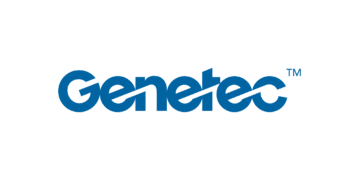Scott Gray, Head of Sales at Morphean, explains to Security on Screen how physical security solutions connected to the cloud can help facilities managers meet security and business objectives
The role of the modern facilities manager can be as challenging as it is rewarding, necessitating the ability to juggle a variety of tasks to keep buildings operating smoothly and people well catered for.
Advances in the security technology used to keep premises safe and secure has now reached a point where it can be of assistance to the facilities manager in not only alleviating some of the pressures of their role, but also providing key insights based on collected data to help them operate smarter.
The good news is that these insights can be easily unlocked using the technology that businesses will have on site already; namely network-enabled surveillance cameras and access control devices.
When connected as a simple IoT device to a business intelligence platform in the cloud, dedicated solutions such as video surveillance as-a-service (VSaaS) and access control as a service (ACaaS) become powerful security and business intelligence tools, revolutionising the role of the modern facilities professional.
Improving safety and security across the business
Where CCTV could accomplish one simple task – capturing video for forensic review – VSaaS utilises today’s network cameras with onboard analytics and artificial intelligence (AI) capabilities for advanced levels of comprehensive security, protecting premises inside and out.
Automatic notifications sent from a dedicated cloud platform, which can also be viewed by an app on a mobile device, ensure that facilities and security teams are alerted to any incident in real-time, rather than after the fact, so that swift action can be taken more readily.
Adding additional cameras as IoT devices unlocks further capabilities. As an example, premises with a car park on site can benefit from cameras with Automatic Number Plate Recognition (ANPR) capability, trained to identify authorised vehicles against a database containing staff and visitor details and enabling automated access.
In the event of a suspicious or unexpected vehicle being detected, IP audio speakers can be configured to sound an alert, while security personnel are notified via mobile device so that they can take action as necessary.
Cameras, while monitoring for security purposes, can also be trained to help enforce health and safety regulations, further helping to protect an organisation’s people.
For example, VSaaS can be utilised to make sure that staff vacate the premises as instructed during a fire drill. Here, ACaaS also comes into effect to grant safe passage through doorways, and even record the swipe of an ID card at designated assembly or muster points.
This results in the automated documentation of staff presence who have safely exited the building without the need for a manual roll-call procedure.
Optimising space in the hybrid workplace
Challenges around the utilisation of office space have been added to by remote or hybrid working practices. While in the pre-Covid world facilities managers could be largely certain about the number of workers that would require access at any one time, now the increase in flexible working patterns makes this harder to predict.
To remedy this, a combination of video and access control can be used to gather anonymised data about staff behaviour over time. This leads to the development of intelligent insights to differentiate periods that are likely to be busy from those that will be quiet, allowing better planning of both space and resources.
Taking this a step further, the facilities manager can use the same data to optimise building management processes. At a time of rising energy bills, organisations need to be mindful of wastage, with facilities professionals under pressure to make cost savings wherever possible.
Data about not only how many staff have entered the building, but also about their movements around the site, can lead to energy savings through automation of heating and lighting based on demand. A quiet day in the office might become a time to conserve resources and thereby save money.
Automated servicing and maintenance of technology
With a responsibility for introducing technology to aid business processes, and for maintaining that technology, facilities managers can take confidence in the automation of maintenance that comes with VSaaS and ACaaS. Backed by a regular rollout of software updates and firmware upgrades, the system is guaranteed to be operational 24/7.
Remote maintenance capabilities mean that updates can be activated by an engineer without the need to physically attend the site. This removes the resulting disruption associated with on-site maintenance and its potential to cause downtime.
Unlike a traditional capital expenditure (CapEx) model, requiring large upfront investment and ongoing physical updating of systems, VSaaS and ACaaS are paid for as operational expenditure (OpEx). This means that, for only a small monthly payment, businesses can access the very latest in cutting-edge technology without large capital investment.
Fully customisable and scalable, VSaaS and ACaaS have been designed to meet evolving business requirements, so additional devices and capabilities can be connected to the cloud, or taken away, as necessary to scale with business need.
Connecting to the cloud unlocks the full potential of the security solutions that are already on site. For facilities managers and their teams the benefits of doing this are clear, while for potential new employees the use of cutting-edge systems and cloud infrastructure is a sign that the business is forward-thinking and embracing change.
Harnessing the capabilities of cloud physical security solutions will lead to the development of more efficient practices, better planning, and put the FM department in a stronger position to face its challenges now and in the future.
Find out more about the benefits of VSaaS and ACaaS for facilities managers here.






